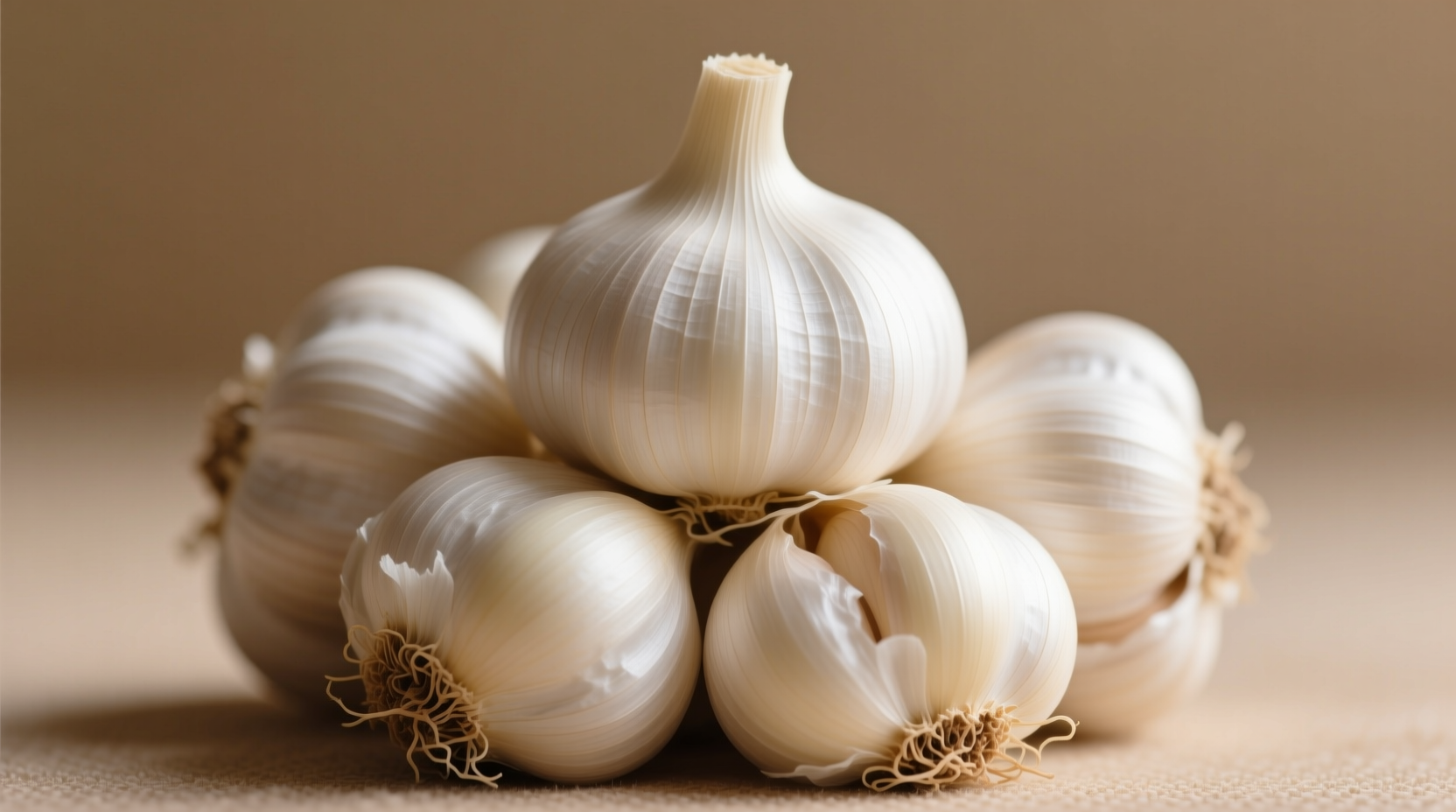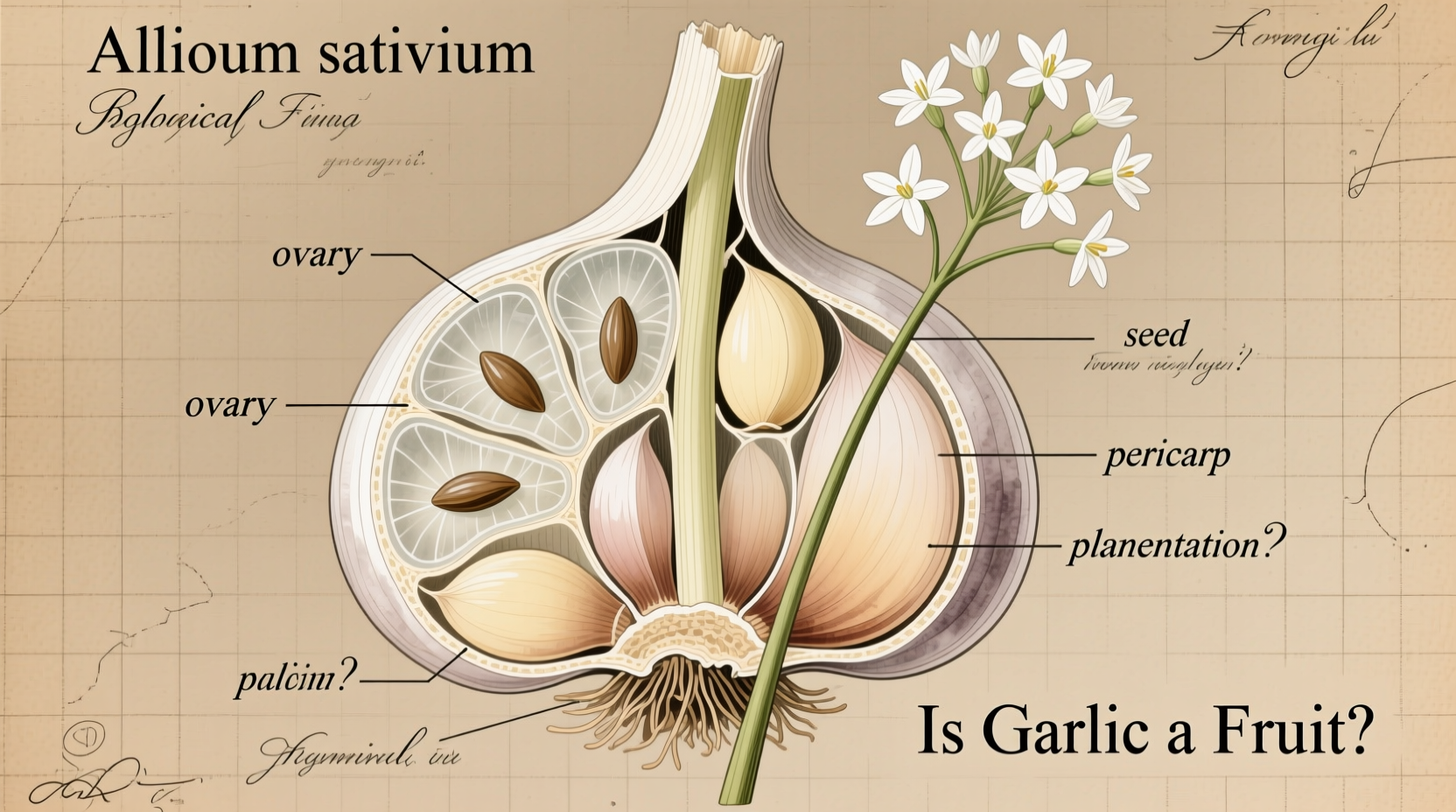Have you ever wondered whether that pungent bulb in your kitchen is technically a fruit or vegetable? You're not alone. Many home cooks and gardening enthusiasts struggle with the proper classification of common ingredients like garlic. Understanding the botanical truth behind garlic's classification helps you make better culinary decisions and appreciate this ancient ingredient's unique biological properties.
Botanical Definitions: What Makes a Fruit?
To properly classify garlic, we must first understand what defines a fruit in botanical terms. According to the USDA National Institute of Food and Agriculture, a fruit is the mature ovary of a flowering plant, typically containing seeds. Fruits develop from the flower after pollination and serve as the plant's mechanism for seed dispersal.
Key characteristics of botanical fruits include:
- Develop from the flower's ovary
- Contain seeds (either inside or attached)
- Serve as a reproductive structure for the plant
- Examples: tomatoes, cucumbers, peppers, and even pumpkins
Why Garlic Doesn't Qualify as a Fruit
Garlic (Allium sativum) fails to meet the botanical definition of a fruit for several critical reasons:
First, garlic reproduces primarily through vegetative propagation rather than seeds. The cloves we plant and eat are actually modified leaves that form underground storage structures called bulbs. While garlic plants can produce flower stalks (called scapes) that eventually develop seed pods, the edible part we commonly refer to as "garlic" is the bulb itself.
Second, the garlic bulb serves as an energy storage organ for the plant, not a reproductive structure. This fundamental biological function places it firmly in the vegetable category, specifically as an allium or bulb vegetable.
| Plant Category | Definition | Examples |
|---|---|---|
| Fruit | Mature ovary of flowering plant containing seeds | Tomatoes, cucumbers, apples |
| Vegetable | Edible parts of plants that aren't fruits | Leaves, stems, roots, bulbs |
| Allium/Bulb | Underground storage organ made of layered leaves | Garlic, onions, shallots, leeks |
Garlic's Botanical Classification Explained
Garlic belongs to the Allium genus within the Amaryllidaceae family. This classification places it alongside other bulb-forming plants like onions, shallots, and chives. The edible portion of garlic consists of individual cloves arranged in a bulb, which is actually a modified stem surrounded by fleshy leaf bases.
According to research from Cornell University's School of Integrative Plant Science, "Allium vegetables are characterized by their distinctive flavor compounds, primarily organosulfur compounds, which develop when the plant tissue is damaged through cutting or crushing." This explains why garlic releases its characteristic aroma only when prepared.

Why the Confusion About Garlic's Classification?
The confusion about whether garlic is a fruit stems from several factors:
First, culinary classification differs from botanical classification. In cooking, "vegetable" is a broader term that includes many botanical fruits (like tomatoes and zucchini) that we don't typically consider sweet. Garlic fits neatly into the culinary vegetable category.
Second, garlic does produce a flowering structure called a scape, which eventually develops a seed pod. However, the edible part we consume is not this seed pod but rather the underground bulb. Many gardeners mistakenly believe that because garlic produces flowers, it must be related to fruits.
Third, some people confuse garlic with other plants that have "fruit" in their name but aren't botanical fruits, such as star fruit (which actually is a fruit) or breadfruit (also a true fruit).
Practical Implications of Garlic's Classification
Understanding garlic's proper classification matters for several practical reasons:
Gardening: Knowing garlic is a bulb vegetable affects how you grow it. Unlike fruiting plants that require specific pollination conditions, garlic grows best when planted as individual cloves in well-drained soil with proper spacing for bulb development.
Cooking: Recognizing garlic as an allium helps you understand its flavor chemistry. Alliums contain sulfur compounds that transform when cut or cooked, explaining why raw garlic has a different flavor profile than roasted garlic.
Nutrition: The USDA classifies garlic as a vegetable in dietary guidelines, which affects how nutritionists count it toward daily vegetable intake recommendations. According to the USDA FoodData Central, one ounce of garlic provides significant amounts of manganese, vitamin B6, and selenium.
Common Misconceptions About Garlic
Several persistent myths surround garlic's classification:
Misconception: "Garlic is a root vegetable like potatoes or carrots." Reality: Garlic is a bulb, not a root. Roots grow downward from the plant's base, while bulbs are modified underground stems with layered leaves.
Misconception: "Since garlic grows underground, it must be a tuber." Reality: Tubers (like potatoes) are swollen underground stems that store nutrients, but they lack the layered structure of bulbs. Garlic's layered cloves identify it as a true bulb.
Misconception: "Garlic flowers mean it's a fruit-bearing plant." Reality: While garlic plants do flower, the edible portion remains the bulb. The flowers produce seeds, but commercial garlic is typically propagated vegetatively through cloves.
How Botanists Classify Common Kitchen Ingredients
Understanding garlic's classification becomes clearer when compared to other common ingredients:
- Tomatoes: Botanically fruits (develop from flower ovary, contain seeds), culinarily treated as vegetables
- Cucumbers: Botanically fruits (same reasons as tomatoes)
- Carrots: Root vegetables (edible part is the taproot)
- Asparagus: Stem vegetable (edible part is the young shoot)
- Garlic: Bulb vegetable (edible part is the modified underground stem)
This distinction explains why some ingredients that we call "vegetables" in cooking are technically fruits botanically. The key is understanding what plant part you're actually consuming.
Historical Context of Garlic Classification
Garlic has been cultivated for over 5,000 years, with early records from Encyclopædia Britannica showing its use in ancient Egyptian, Indian, and Chinese civilizations. Historically, classification systems were based on culinary use rather than botanical science.
The modern botanical classification of garlic as Allium sativum was established by Carl Linnaeus in the 18th century as part of his binomial nomenclature system. This scientific approach separated culinary traditions from biological reality, explaining why our kitchen terminology often conflicts with botanical accuracy.
Practical Takeaways for Home Cooks and Gardeners
Now that you understand garlic's proper classification, here's how to apply this knowledge:
- When gardening: Plant garlic cloves (not seeds) in fall for best bulb development
- When cooking: Remember that crushing garlic releases more flavor compounds than slicing
- When storing: Keep garlic in a cool, dry place away from direct sunlight to prevent sprouting
- When substituting: Other alliums (onions, shallots) can replace garlic but with different flavor intensity
Understanding that garlic is a bulb vegetable helps explain its unique storage requirements and culinary behavior. Unlike fruits that continue ripening after harvest, garlic bulbs remain relatively stable until they begin to sprout.











 浙公网安备
33010002000092号
浙公网安备
33010002000092号 浙B2-20120091-4
浙B2-20120091-4